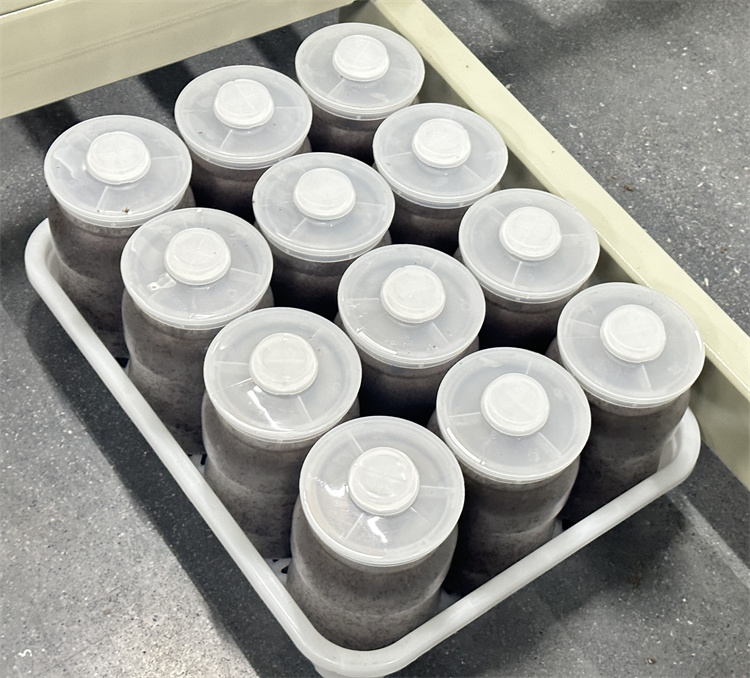
This article will use an 1100ml, 85ml spawn bottle as an example. Before bottling, clean and dry the empty bottles. The bottling machine can hold up to 16 bottles at a time. After filling, compact and flatten the surface, punch five holes, and cap the bottles. The standard weight per bottle is 1020-1050g (bottle and cap included), with the material 1.7-1.9cm from the bottle opening. Below are the key technical points and precautions for bottling for your reference.
1. Bottling Process
Sensory confirmation of mixing results ŌåÆ Bottling ŌåÆ Robot loading onto carts ŌåÆ Push carts into storage cabinets
2. Bottling Machine Operator Responsibilities
ŌæĀ Confirm equipment operation and start bottling.
ŌæĪ Responsible for rejecting defective bottles.
Ōæó Responsible for spot-checking bottling quality and making minor adjustments to the bottling machine based on the results.
ŌæŻ Clean the bottom of the five-hole punching platen with an air gun every 10 minutes.
Ōæż Responsible for cleaning and maintaining the bottling machine. 3. Bottling Operation Requirements
ŌæĀ Clean empty bottles. Select clean bottles with no dirt inside or outside. Before bottling, use compressed air to remove dust and debris from the bottles, baskets, and other areas. Remove particularly dirty bottles or those with broken necks.
ŌæĪ Remove broken bottle caps. Remove severely damaged, deformed, or contaminated caps (remove once during the scratching process and once during bottling).
Ōæó Verify that all parts of the machine are clean and free of stuck debris, especially the perforating rods.
ŌæŻ Verify that the raw materials are pre-wetted. Before bottling, mix the raw materials thoroughly. Stir the dry materials for at least 20 minutes, then stir for at least 60-70 minutes after adding water. Ensure the moisture content is 67% ┬▒ 1% and the pH is 6.8-7.2. Bottling can only be performed after sensory testing meets the standards.
Ōæż Load the empty bottles, start the bottling machine, and test 10 baskets.
Ōæź Weigh the bottles. The standard weight of each bottle is 1020-1050g (including bottle and cap). The fluctuation within a basket should not exceed 10g. The weight of bottles in different baskets must be consistent and recorded.
Ōæ” Measure the height of the material surface. For the second punch, press down 1.75cm, ensuring the material surface is level and 1.7-1.9cm from the bottle opening.
Ōæ¦ Once both the material surface height and individual bottle weights meet production requirements, start bottling and keep relevant records.
Ōæ© Weigh three times per batch and measure the material surface height three times per batch, inspecting once every 15 meters on average. Keep records of the number of bottles inspected.
Ōæ® If defective products are found during bottling (more than four bottles per basket), report them immediately and make appropriate adjustments.
ŌæĀ Ensure the baskets are stacked neatly to prevent hole collapse.
Ōæ½ Load the sterilization cart (24 baskets/cart) and arrange them neatly for sterilization.
@After bottling, thoroughly clean the bottling machine and the floor, and lubricate all transmission components of the bottling machine.








